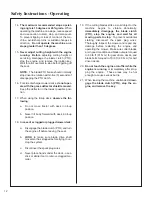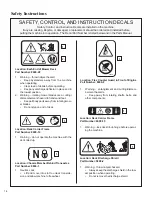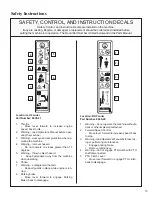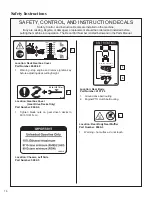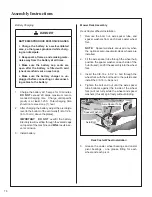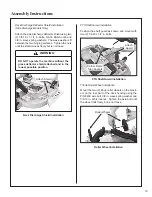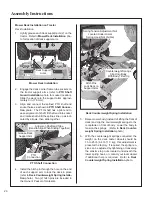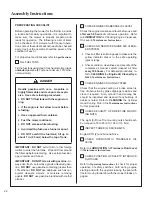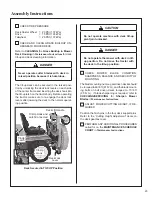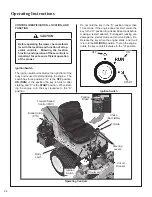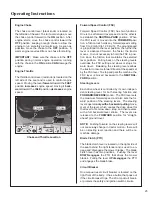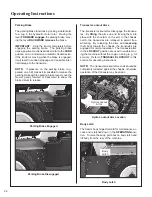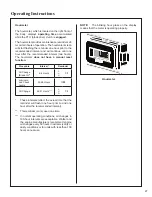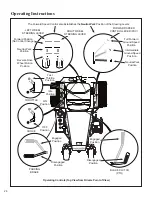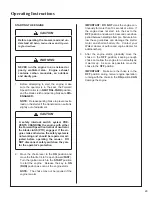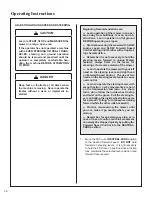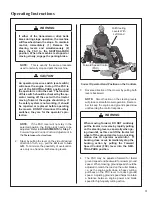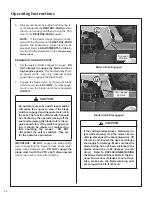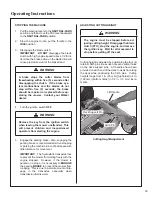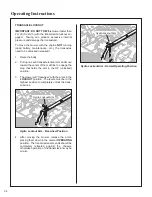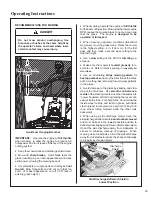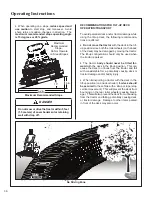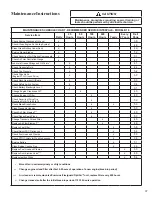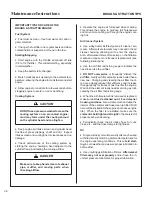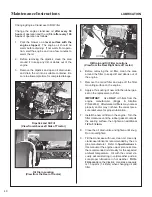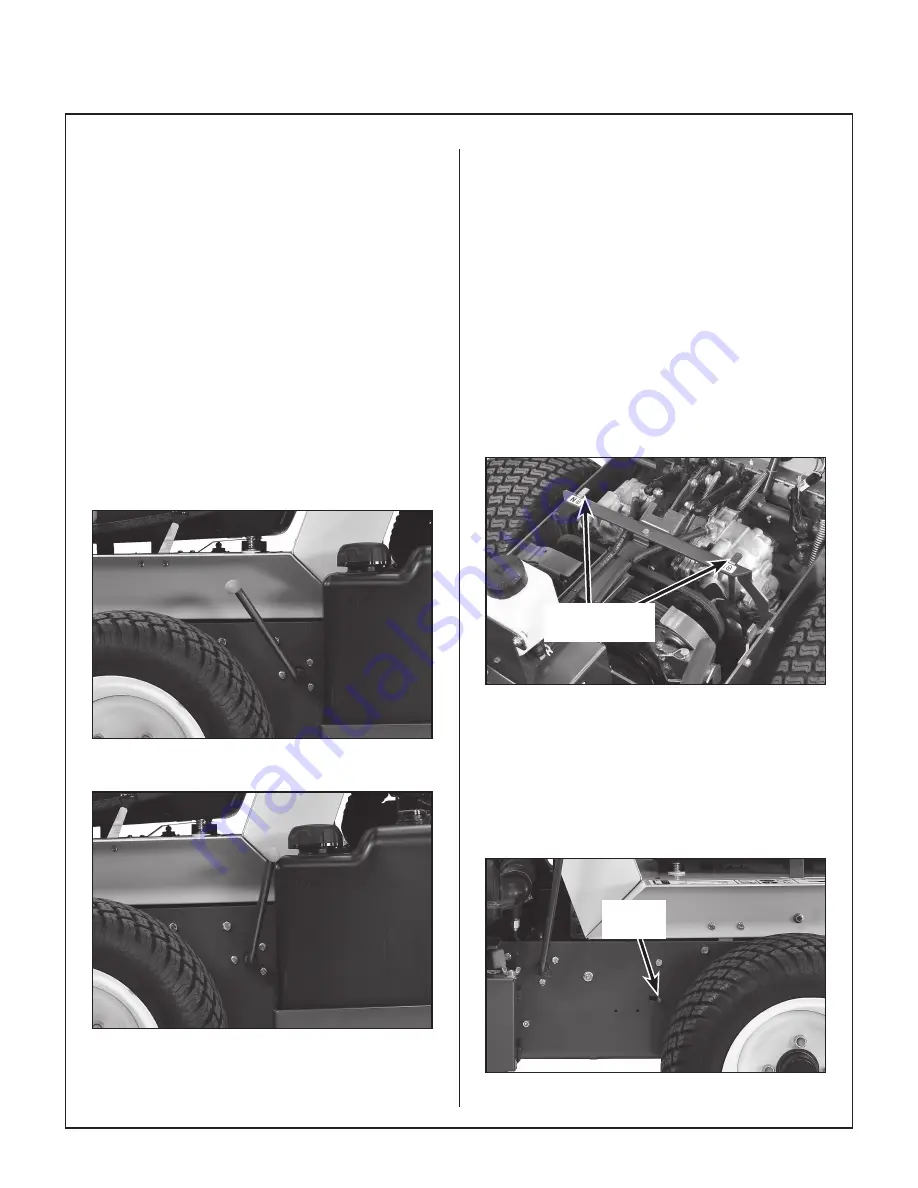
Operating Instructions
26
Parking Brake
The parking brake functions by locking a detent arm
to a cog in the hydraulic motor rotor. Moving the
lever
FORWARD engages
the parking brake; mov-
ing the lever
BACKWARD releases
the brake.
IMPORTANT:
Stop the tractor completely before
engaging the parking brake. The parking brake
uses a positive mechanical lock similar to the
PARK
position on an automotive automatic transmission.
If the tractor is moving when the brake is engaged,
it will result in sudden stoppage and possible inter-
nal damage to the transaxle.
NOTE:
If pressure on the parking brake (e.g.,
parked on a hill) makes it impossible to release the
parking brake with the parking brake lever, move the
mower gently forward or backward to allow the
brake detent to release.
Parking Brake Engaged
Parking Brake Disengaged
Transaxle Lockout Arms
The transaxle lockout arms disengage the transax-
les. By
lifting
the arms up and locking them into
place with the shoulder on the arm in the chassis
notch, the transaxles are released to permit free-
wheeling. By releasing the arms and
recessing
them back toward the chassis, the transaxles are
engaged for normal operation. The transaxle arms
in the
LOCKOUT
position are used to enable mov-
ing the machine without the engine running (e.g., for
service). Refer to
TRANSAXLE LOCKOUT
in this
section for operating instructions.
NOTE:
The transaxle lockout arms ends should be
completely retracted against the chassis, otherwise
operation of the transaxle may be erratic.
Hydro Lockout
Arms
Hydro Lockout Arm Location
Body Latch
The tractor body hinges forward for maintenance ac-
cess and is latched down in the
OPERATING
posi-
tion. To raise the body, pull back on body latch and
lift body from the rear of the machine.
Body
Latch
Body Latch
Summary of Contents for B18
Page 73: ...69 Operator s Notes...
Page 74: ...70 Operator s Notes...

